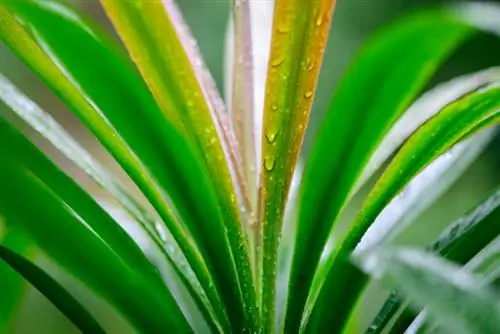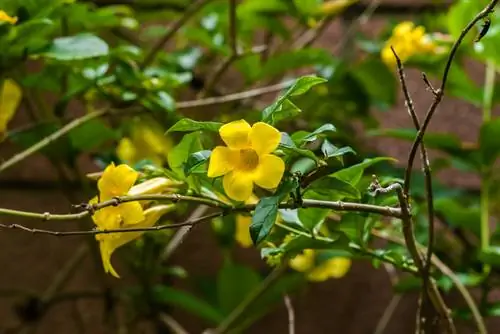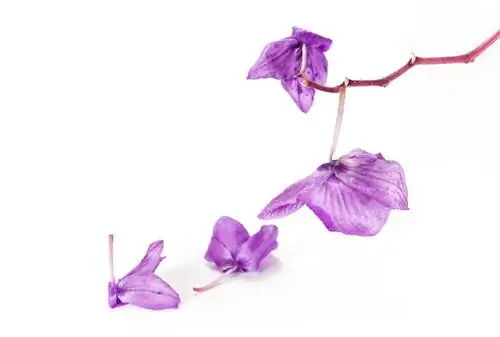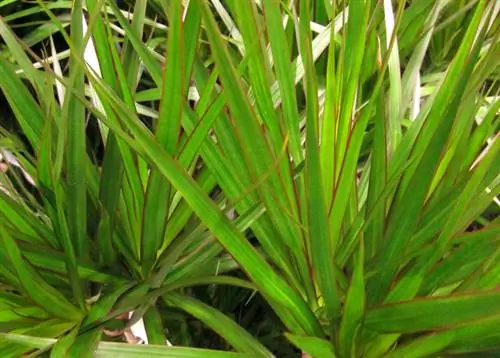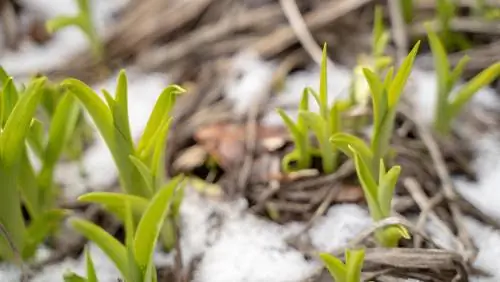- Author admin [email protected].
- Public 2023-12-16 16:46.
- Last modified 2025-01-23 11:21.
Basically, the dragon tree in its numerous subspecies is extremely robust and therefore a very popular houseplant. However, an incorrect location can quickly lead to drooping or brown leaves, requiring a “restart” of plant growth.
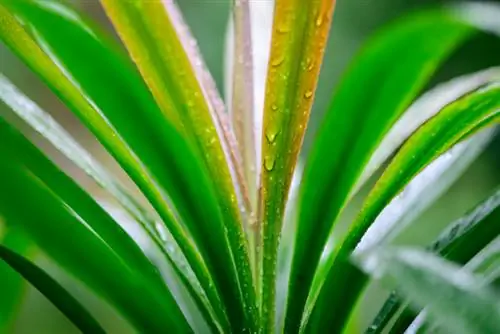
How do you encourage new shoots in the dragon tree?
In order to encourage new shoots in the dragon tree, the upper part including all leaves can be carefully pruned. After good care, new shoots will form just below the cut point within a few weeks.
Rotten roots and a dying leaf crown
If dragon trees are not cultivated hydroponically but in soil, excessive watering often causes roots and other parts of the plant to rot and die. If this is the case, you can usually smell it clearly at an early stage. Once individual parts of the plant have developed advanced signs of rot, a dragon tree cannot be saved so easily. Extremely radical measures are required if such a plant is not to die completely.
Use the upper part of the dragon tree as a cutting
Simply reducing watering or quickly repotting is not enough to save a dragon tree with already rotten roots. However, you can proceed as you would when propagating the dragon tree and cut the thin trunk in the middle with clean secateurs. You can then root the head cutting obtained in this way in water or special planting substrate. During these weeks, the cutting should be placed in as much shade as possible and with high humidity.
Force new shoots through radical pruning
On the continuous “trunk” of a dragon tree, no new shoots usually form below the leaf crown at the very top. However, it may be necessary to cut off the upper part of the dragon tree including all leaves for the following reasons:
- for illnesses
- if the leaves turn brown extensively after massive sun damage
- as a measure in favor of a more compact growth habit
If the cut is carried out with sharp secateurs and then cared for well, new shoots will form just below the cut point within a few weeks.
Tip
Specific pruning with the aim of forming new shoots is often used in dragon trees to force the plants to branch out more.

